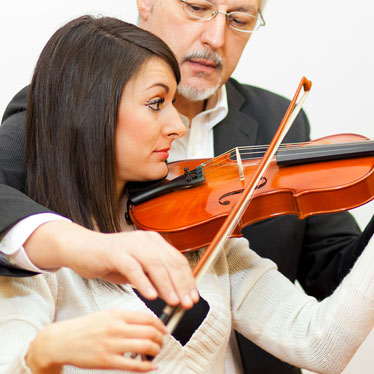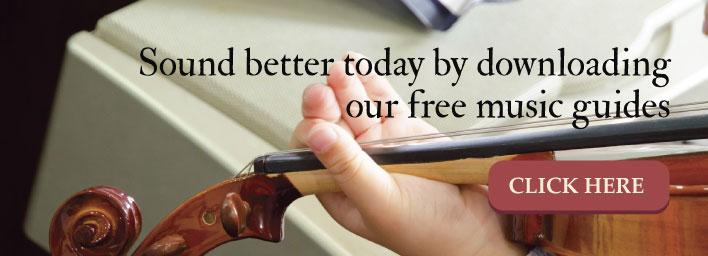5 Bow Movement Exercises for Beginning Violinists

The violin is an expressive, well-beloved instrument. Its unique sound is fashioned by the player’s precision movements and personal feelings as much as the instrument itself. However, the most influential factor in delivering great sound on a violin involves your specific bow movement. The bow “arm” technique you develop helps to shape the tone, volume, rhythm, and accents of the music you play, but developing excellent bow movement is often a challenging aspect for beginning violinists.
Violin students who need to enhance and perfect their bow movement should orchestrate practice exercises around three key factors: straight bowing, arm motion, and using gravity. Each factor addresses a specific area involved in bowing, and trains your body through concentrated repetition so that you can develop muscle memory. These exercises can help you improve your bow movement, and consequently, build your performance skill.
Straight Bow
The most important aspect to learn, the straight bow is taught first. This shows the student how to achieve pure tone, and makes it easy to understand the relationship between the sound being produced and the contact of the bow-hair on the string. A straight bow is performed by ensuring that straight bow strokes, which are parallel to the bridge, make full contact with the string for the length of the bow. As you advance, you’ll notice the subtle alterations that can be made by tilting or only allowing a portion of the bow hair to interact with the string.
- The most important thing is for you, as a student, to “feel” the way a straight bow is accomplished. The shoulder doesn’t move, but the straight bow actually appears crooked to the performer. This simple exercise requires another person to help you, but you basically place the tip of the bow on any string you like. Then, while one person holds the screw (so that the bow doesn’t move), you form your bow hold and slide your hand lightly down the bow. This technique allows your hand, wrist, and elbow to develop the correct straight bow movements.
- Another idea: While standing sideways against a wall with your bowing shoulder flush against it, position the violin and practice detache strokes. The wall will prevent you from moving your arm behind your body as you play the up and down strokes.
- Or, you can very gently place a fan-folded piece of paper or a flexible plastic drinking straw into the top of each f-hole and use them as a guide to prevent your bow from moving crookedly while you practice. (Much cheaper than expensive guides that can be purchased.)
Arm Motion
Fluid movement of your entire arm is also important to develop. Students should pay particular attention to the way the elbow and forearm move in relation to the bow stroke.
- To practice this, place the tip of your bow on an open A and then completely relax your arm muscles. Inhale deeply and using the elbow to lift the bow move it so that the frog end rests in the same spot, then exhale deeply. Reverse it, and after a few tries, continue the exercise while making contact with the string. The controlled movement of your arm is the important aspect.
Learning to Utilize Gravity
Too much tension in your muscles will ruin your bowing technique. To create pleasing sounds, it’s imperative to stay loose while playing the violin, and simply rely on the natural force of gravity acting on the bow and the weight of your arm to generate sound.
- This is a good way to practice keeping your muscles free of tension: Position the bow on the E string and relax your arm. While standing and holding the violin and bow in place, carefully walk around your music stand. If you hear any scratching or squeaking, your arm isn’t relaxed properly. After you’ve developed a good feel for the way gravity is used, now while the bow is resting on the string, focus on the stress-free feeling in your arm and play a long, slow bow stroke. It’s important during this exercise to listen and feel how the proper weight distribution (controlled by the upward pressure of your thumb) is established.
By practicing these five exercises, you can improve your bow movement and become a better violinist. It will also help you reach the goals that are required for the next stages in your violin training. Remember to take your time and focus on relaxed, steady motions. With diligence, you’ll see marked progress and increase your ability to create your own original musical expression.

